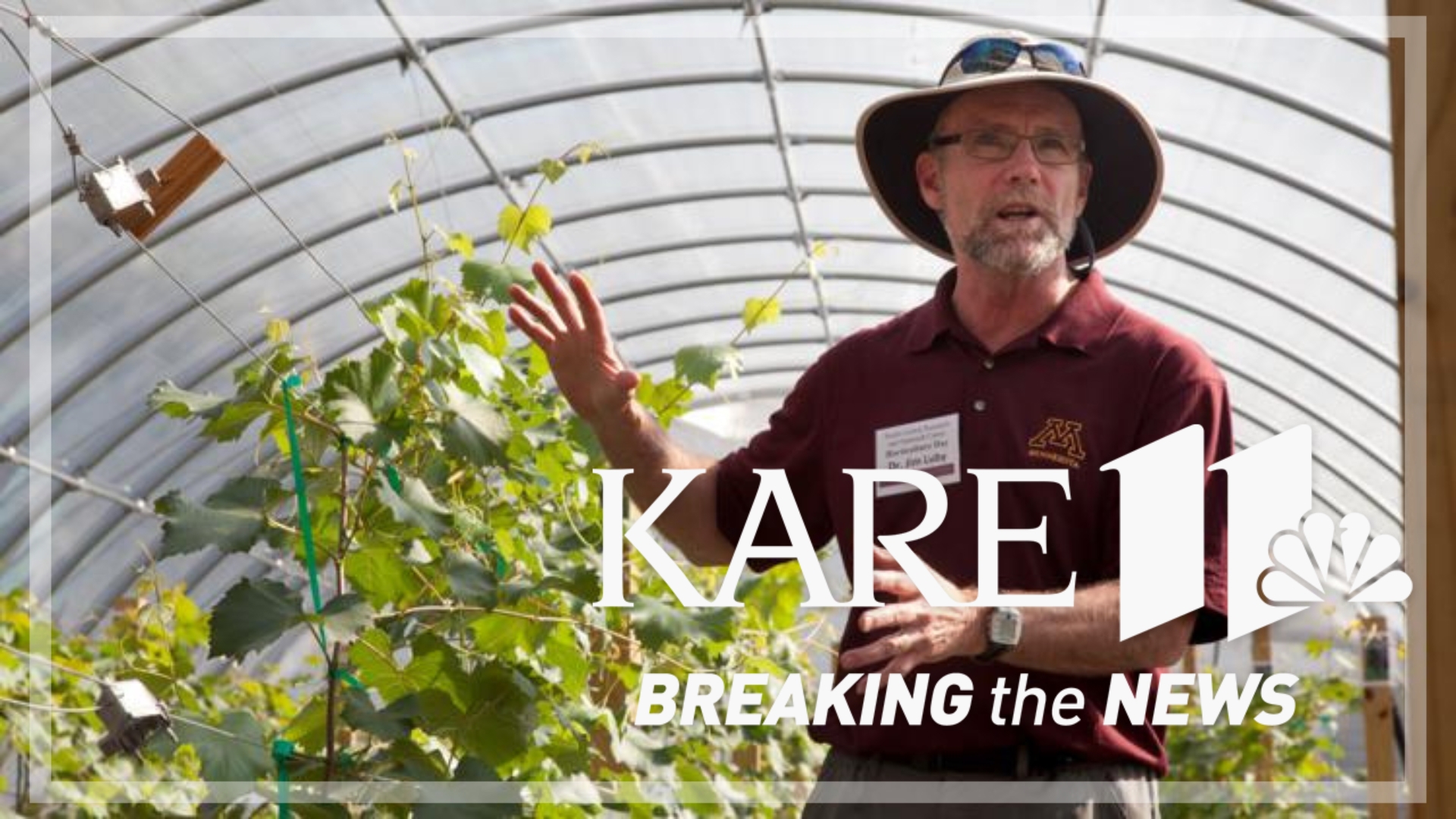VICTORIA, Minn. — The man behind Minnesota's favorite apple has decided to call it a career.
This summer Jim Luby retired after a 40-plus year career of apple breeding at the University of Minnesota’s Horticultural Research Center.
During his career Luby and his team created some of the tastiest apples in the country, including SweeTango, Zestar! and their biggest success, Honeycrisp.
Luby is now passing the torch to a new generation of apple breeders who will be led by one of his former students.
“It’s a little overwhelming,” Matt Clark said. “It’s a lot to take in.”
Clark enrolled in the master’s program at the University of Minnesota’s Applied Plant Science program in 2009. He received his degree a year later and started working on his PhD. That’s when he developed a strong appreciation for apple breeding.
“I did my PhD in the fruit-breeding lab. I studied, actually, Honeycrisp. I had an opportunity to take a deep dive into why Honeycrisp has this special gene and to be part of the legacy of Honeycrisp in Minnesota,” Clark said.
After graduation, Clark joined the department as an associate professor in their grape-breeding department to develop new wine grapes that can survive in Minnesota winters.
In late 2023 Clark was asked if he would be willing to transition over to apples and take over for his former professor.
“Jim is an exceptional scientist and a wonderful person and it’s some big shoes to fill,” Clark said.
Yes, some big shoes indeed, but also an iconic apple to live up to.
“Honeycrisp was our gem. It still is, and we use it a lot in breeding, and what we’ve realized is our competition is too, because of that excellent quality, the crispiness. So, we have to step up our game to compete with everybody who is using Honeycrisp as a parent,” Clark said.
Clark said almost every apple they're developing right now is somehow connected to Honeycrisp.
“Honeycrisp was either the grandparent, maybe even great grandparent, or maybe even the parent to a lot of the apples we work with,” Clark said.
Every year the research team plants hundreds of seeds and each one of them is slightly different. If the seed grows into a tree that can survive a Minnesota winter, then the apples move on to the taste test.
"It can't taste bad, it can't be bitter or astringent, but it might be a little tart, might be a little sweet, might have some interesting flavors, but if it's not crisp and juicy like Honeycrisp or SweeTango, there's no way it's going to end up in our cooler,” Clark said.
The apples that show enough qualities to earn a spot in their cooler are then tested to see how long they can survive on the shelf.
“If they can only survive for a month and a half or so then we kick them out,” Clark explained.
Very few apples meet their strict standards for quality, taste and shelf-life.
Clark said the research team usually tests out more than 10,000 combinations before they can find one new variety that is good enough to release to the public.
"Apple breeding is a long-term investment," he said. "20-ish years to develop a new variety.”
Clark said it’s very possible the next great apple may be growing in their orchard right now, but he understands that great discoveries take time.
"I’m not looking to retire any time soon, but you know, if I'm here in 25 years, at the end of my career, we're hoping to have some more success stories that we can look back on.”

